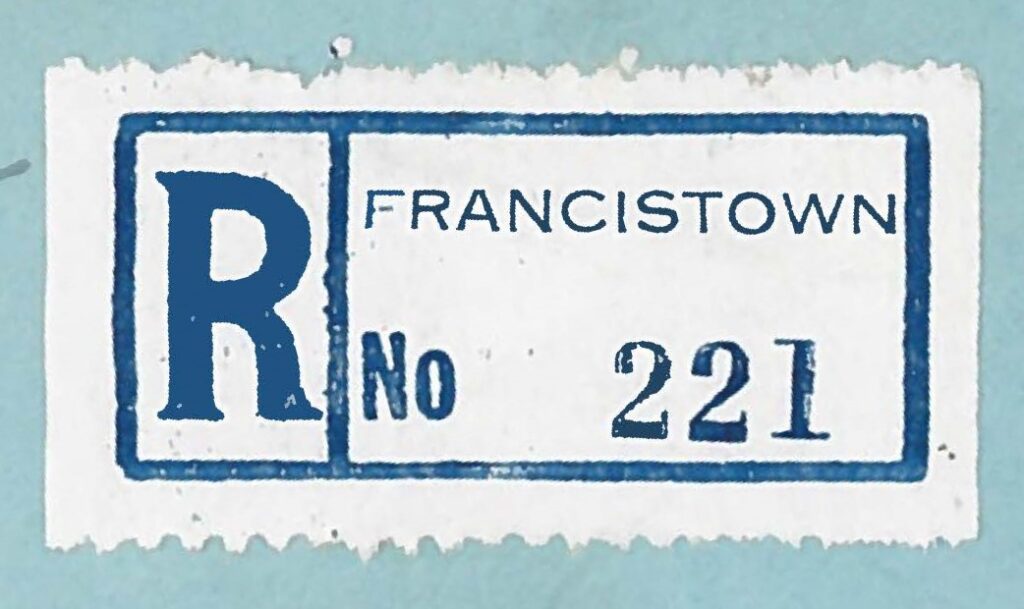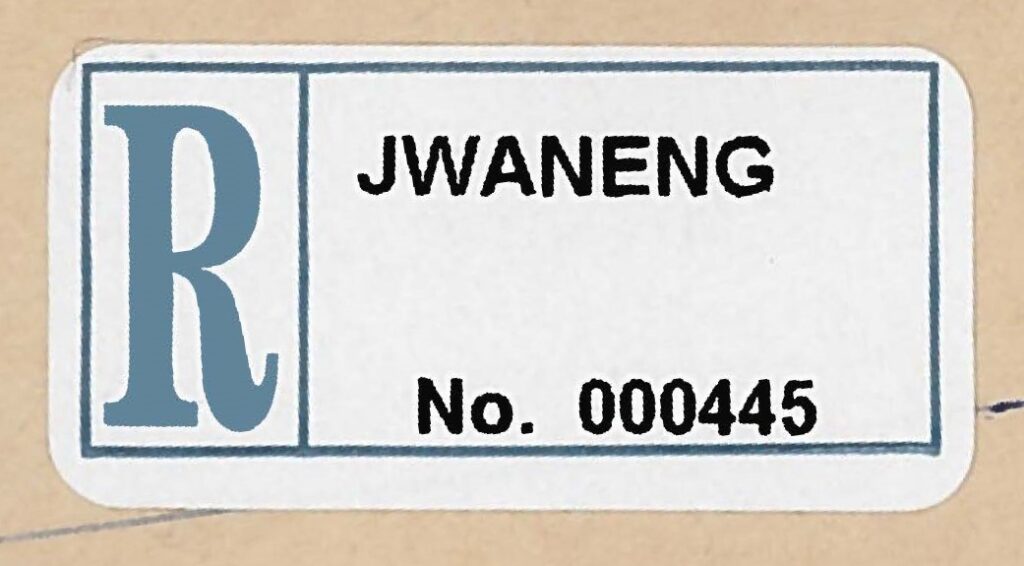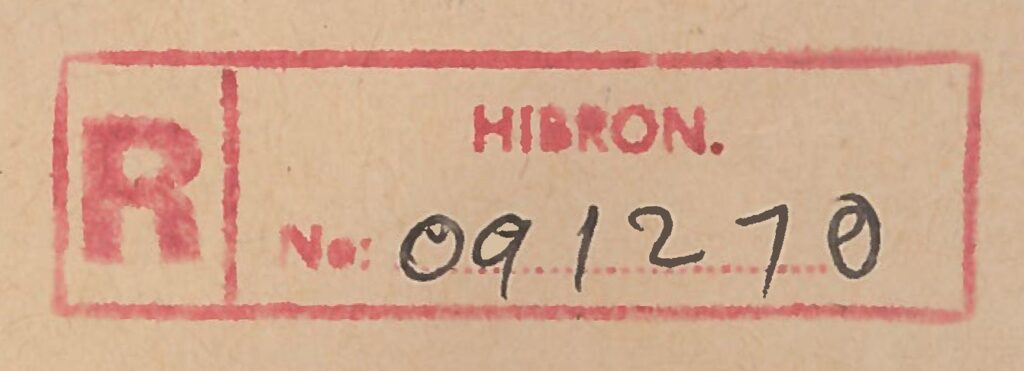Registered mail is a service offered by the postal services of most countries where senders, via payment of an additional fee can have assurance of additional special handling and sometimes upon request, can receive proof of delivery. Generally, as the registered item is passed from office to office on its route, it is recorded in a ledger and the addressee signs a confirmation of receipt. To keep track of these items, post offices assign a unique registration mark to the item. These marks can consist of manuscript markings, handstamps, preprinted registration labels, and more lately computer readable bar codes.
Printed registration labels were first introduced at a few of the larger offices in the Bechuanaland Protectorate in the 1950’s. Following Independence, the use of these labels became quite widespread in the new country of Botswana. These were gummed labels printed with the issuing office name and a unique number supplied on perforated coils.

Self-adhesive labels printed with the issuing office name and a unique number were introduced in the 1990’s. It is assumed that these are also provided on coils with the issuing office name and a unique number.

Initially, registration was noted on covers in Bechuanaland via manuscript markings and this type of marking continues in use today.

Handstamps with a manuscript number were also used as early marks of registration and their use has also continued until the present. A tentative system for creating a typology of handstamps is described in the Postal Marking Classification (Typology) developed by Brian Trotter published by the Bechuanalands and Botswana Society in 1995.

More recently, Botswana post has introduced the use of self-adhesive computer scannable barcode labels.
